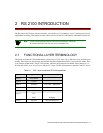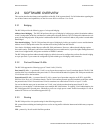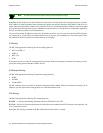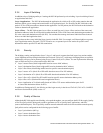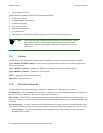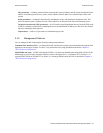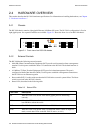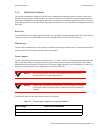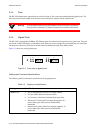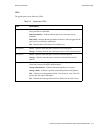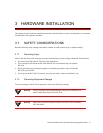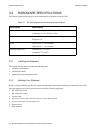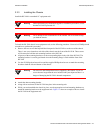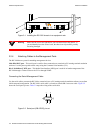
Riverstone Networks RS 2100 Switch Router Getting Started Guide 2-9
RS 2100 Introduction Hardware Overview
2.4.3 Motherboard Features
The internal “motherboard” performs all the RS 2100’s computing and routing functions. It contains system-wide
bridging and routing tables. Traffic that does not yet have an entry in the L2 and L3/L4 lookup tables on individual
gigabit ports is handled by the motherboard. After processing traffic, the motherboard updates the L2 and L3/L4 tables
on the gigabit ports that received the traffic. The gigabit ports then take over all subsequent forwarding for the learned
table entry.
Boot Flash
The motherboard has a boot flash containing the RS 2100’s boot software and configuration files. The system software
image file resides on an internal flash chip and can be upgraded from a TFTP or BootP/TFTP server.
RAM Memory
The RS 2100’s motherboard uses 128 megabytes of RAM to hold routing and other tables. To upgrade the amount of
memory on the RS 2100, contact your Riverstone representative.
Power Supplies
The RS 2100 uses two power supplies, each delivering 3.3, 5, and 12 volts DC to the motherboard, internal fans, and
other components. Each power supply provides a portion of the power necessary to operate the RS 2100, with the
added feature that, in the unlikely event that one of the power supplies should fail, the remaining power supply will
assume the entire load and provide enough current to operate the RS 2100.
Warning Be sure to plug the RS 2100 into a single-phase grounded power source
located within 6 feet of the installation site.
Warning Failure to provide adequate grounding for the AC power supply can result in
critical injury and serious damage to the switch router and will invalidate your
warranty.
The following table lists the specifications for the power supplies.
Table 2-4 Power supply voltage and current specifications
Input voltage Input current (maximum)
100-125 VAC 2.6 A
200-240 VAC 1.3 A



